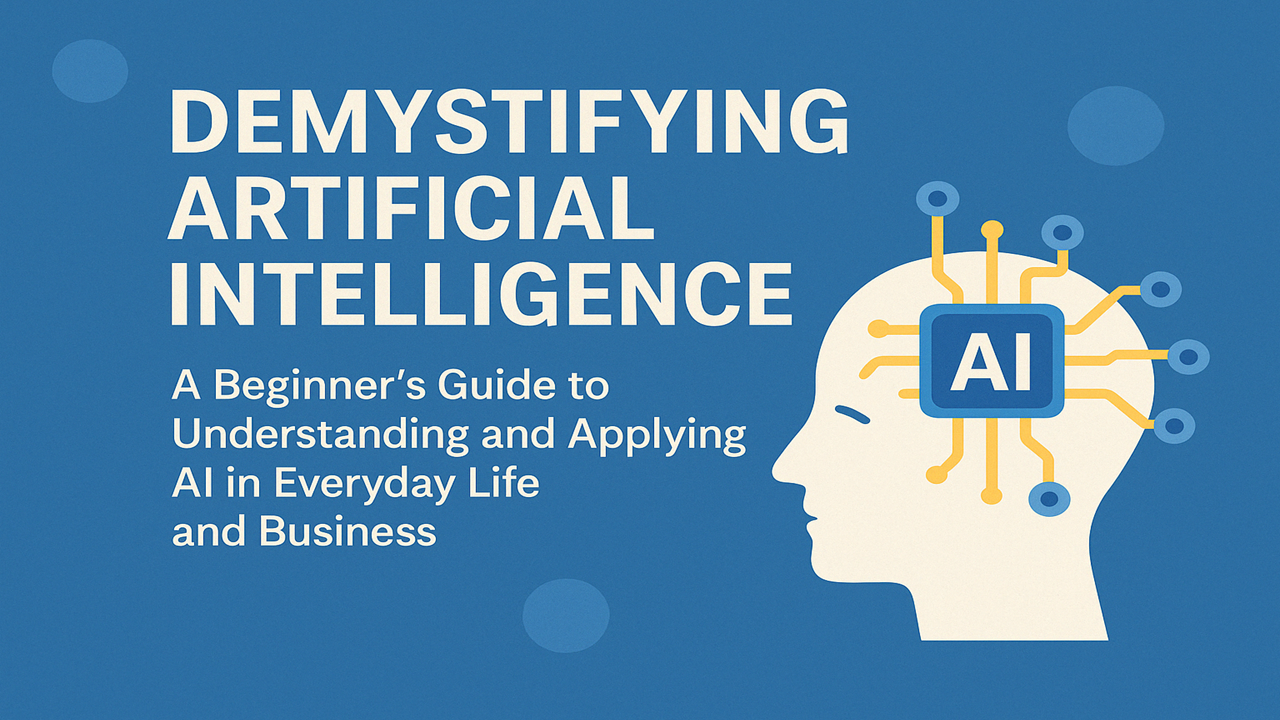Demystifying Artificial Intelligence: A Beginner’s Guide to Understanding and Applying AI in Everyday Life and Business Part 1

A companion to your journey into the fascinating world of AI with this friendly beginner’s guide! You’ll discover the purpose of artificial intelligence, explore its real-life applications like voice assistants and recommendation systems, and learn how AI can enhance your daily life and business. From practical uses at home to professional tools that streamline tasks, this guide will equip you with the knowledge needed to navigate the evolving landscape of AI while addressing ethical considerations that come with its use.
Key Takeaways:
- AI encompasses various technologies such as machine learning and natural language processing, which enable applications from voice assistants to recommendation systems, enhancing personal and professional experiences.
- Understanding the difference between narrow AI, designed for specific tasks, and general AI, which aims to perform any intellectual task like a human, helps clarify AI technologies' current capabilities and limitations.
- Ethical considerations, including bias and privacy, are essential when implementing AI tools and exploring free and easy-to-use AI resources that can integrate into both business and educational environments for improved efficiency.
What Is Artificial Intelligence?
Artificial Intelligence (AI) is a branch of computer science that aims to create machines capable of performing tasks that typically require human intelligence. These tasks include understanding natural language, recognizing patterns, and making decisions. AI is all around you, from voice assistants like Siri to recommendation systems on Netflix, shaping how you interact with technology daily.
Defining AI in Simple Terms
There's a simple way to think about AI: it is technology designed to mimic human thinking and behavior. By analyzing data and learning from it, AI systems can improve their performance over time, making them increasingly valuable for various aspects of your life.
The Evolution of AI Technology
There's been a significant transformation in AI, moving from basic rule-based systems to more advanced forms like machine learning and deep learning. Initially, AI could only follow predefined instructions, but advancements now allow it to learn from data, making it capable of more sophisticated tasks like speech recognition and autonomous decision-making.
Another exciting aspect of AI’s evolution is the rise of machine learning and deep learning, which have exponentially increased AI’s capabilities. These technologies enable systems to analyze vast amounts of data, recognizing previously undetectable patterns, leading to advancements in healthcare and customer service. AI is now more integrated into your daily life and business operations than ever, driving efficiency and innovation.
Common Misconceptions About AI
Misconceptions surrounding AI often include fears about robots taking over jobs or the belief that AI systems can think independently. While AI is powerful, it relies heavily on data and human oversight, meaning it doesn’t possess consciousness or intent.
Understanding these misconceptions allows you to approach AI more realistically. It’s vital to recognize that AI enhances human capabilities rather than replacing them. Acknowledging its limitations and potential risks, such as bias and privacy issues, can help you engage with AI more effectively.
Key Types of AI
Any understanding of artificial intelligence involves recognizing its different forms. The main types can be categorized as:
AI |
Description |
|---|---|
Narrow AI |
Designed for specific tasks, such as voice assistants and recommendation systems. |
General AI |
Theoretical intelligence is equal to human capabilities across various tasks. |
Superintelligent AI |
A future concept where AI surpasses human intelligence and capabilities. |
Machine Learning |
A subset of AI-enabling systems that learn from data without explicit programming. |
Deep Learning |
A type of machine learning that uses neural networks for complex tasks. |
Recognizing these types helps you understand how AI impacts daily life and business.
Narrow AI: Specialized Intelligence
Narrow AI focuses on specific functions, enabling tasks like chatbots in customer service and email filters in your inbox. These systems are engineered to excel in defined tasks, enhancing efficiency and usability in personal and professional settings.
General AI: Theoretical Concepts
General AI refers to systems that could perform various tasks at a human-like cognitive level. While it remains theoretical, the goal is to create AI that understands and learns across multiple domains, functioning as a versatile assistant.
Theoretical general AI could revolutionize industries by providing unprecedented problem-solving capabilities, streamlining processes, and analyzing data more effectively. As you explore AI, envision its potential to transform how we learn, work, and interact with technology in various fields.
Superintelligent AI: What Lies Ahead
Ahead, superintelligent AI represents an advanced stage where artificial intelligence would surpass human intellectual capabilities. This concept poses fascinating possibilities and significant challenges regarding control and ethical use.
Types of superintelligent AI could profoundly affect various aspects of life, including decision-making, creativity, and ethics. While it holds immense promise for solving complex societal issues, there are also serious risks, such as potential loss of control and ethical dilemmas. It's vital to approach this emerging frontier with careful thought and responsible development.
Understanding what AI is and how it can be used in the various facets of your life is the first step. As you explore how fascinating the world of AI is, you will feel more comfortable understanding its place in your life. In Part 2, we will look at "How AI is Changing Everyday Life."
See you in Part 2!